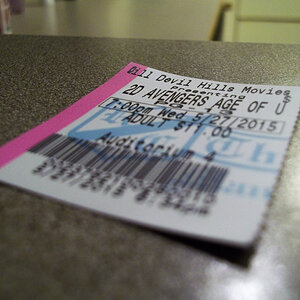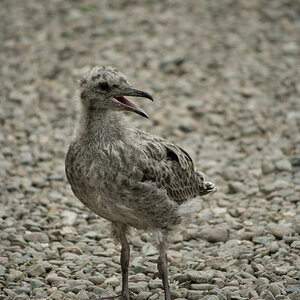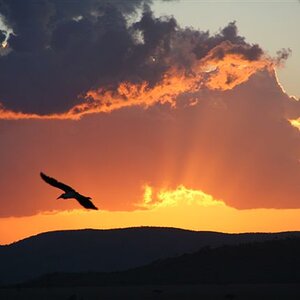robertwsimpson
No longer a newbie, moving up!
- Joined
- Aug 3, 2009
- Messages
- 2,471
- Reaction score
- 30
- Location
- West Palm Beach, Fl
- Website
- www.flickr.com
- Can others edit my Photos
- Photos NOT OK to edit
There seems to be a lot of confusion about how focal length (the mm part of what your lens is called) and focus distance (how far away from the front lens element you are focusing) affect a photo's depth of field. People have been arguing that a photo taken with a longer photo length (ie the long side of a zoom lens) will have a smaller DoF, given the same f-stop setting. As I learn best by doing, I have some exhibits that should help show what is actually happening. Hope this helps. Keep in mind that the basis of this is "similarly framed photographs."
Exhibit 1:

This photo was taken with my 18-55mm f/3.5-5.6 kit lens with it set at 18mm and f/3.5. The first thing that everyone should take notice of is that a blurred background is very achievable with one of the worst and cheapest lenses that canon makes.
Exhibit 2:

This photo was taken with my 18-55mm f/3.5-5.6 kit lens with it set at 55mm and f/5.7. This is the widest aperture setting available at this zoom.
Exhibit 3:

This photo was taken with my 18-55mm f/3.5-5.6 kit lens with it set at 18mm and f/5.7. This is the same aperture value as the maximum available at 55mm.
First, lets dispel the myth that on a variable aperture lens, the DoF becomes smaller at the long end of the lens. This is clearly not the case. The easiest way to tell this is by looking at the coffee cup behind the stuffed animal. At 55mm and 5/5.7, the black line at the top of the cup is distinct. At 18mm and f/3.5, it is barely distinguishable at all. Another way to tell is by looking at the dark spot above the hind leg of the stuffed animal. In the 18mm shot, the spot is blurry. In the 55mm shot, some of the fibers are distinguishable. In this instance, logic prevails. A shot at 18mm and f/3.5 does in fact have a smaller DoF than a similarly framed shot at 55mm and f/5.7.
Next, lets compare the two shots with the same f-stop values. Comparing the coffee cups reveals similar levels of detail. The black ring is distinguishable, although blurred. The spot on the stuffed animal's leg is blurred, but some of the fibers are visible. I would confidently assert that these two photos have very similar depths of field.
Thus ends the data dissection of this experiment. I do have some other observations. First, Depth of Field has far more to do with focus distance than focal length. Let me explain. Everyone is familiar with the focus graph. If not, it looks something like this:

So, the closer the object is to the minimum focus distance of the lens, the smaller the DoF becomes. We see this with macro lenses. That is why giant f-stops (tiny apertures) are used in macro photography. The farther away an object is from a lens' minimum focus distance, the larger the DoF becomes. That is why the maximum focus distance on a lens is infinity, rather than some arbitrary distance. The farther away one focuses, the DoF becomes so gigantic that for intents and purposes, everything far away is in focus.
One reason that I think people assume longer focal lengths give a shallower depth of field is that when compared to shorter focal lengths, longer ones act to compress the apparent distance between an object and its background. This can be seen in the size of the coffee cup in the 18mm shots vs the 55mm shot above. I did not move the cup, but it appears closer to the camera in the 55mm shot. Since it appears closer to the camera, and it is still blurred by the same amount as the 18mm shot, it appears that the 55mm shot has a shallower DoF than the 18mm shot.
I hope that this helps everyone. Also, I hope that when people make assertions on the internet, no one just believes them without reading up or doing his own experiments. Not only is it silly to just accept what other people say, but you can learn a lot by checking things out for yourself.
Exhibit 1:

This photo was taken with my 18-55mm f/3.5-5.6 kit lens with it set at 18mm and f/3.5. The first thing that everyone should take notice of is that a blurred background is very achievable with one of the worst and cheapest lenses that canon makes.
Exhibit 2:

This photo was taken with my 18-55mm f/3.5-5.6 kit lens with it set at 55mm and f/5.7. This is the widest aperture setting available at this zoom.
Exhibit 3:

This photo was taken with my 18-55mm f/3.5-5.6 kit lens with it set at 18mm and f/5.7. This is the same aperture value as the maximum available at 55mm.
First, lets dispel the myth that on a variable aperture lens, the DoF becomes smaller at the long end of the lens. This is clearly not the case. The easiest way to tell this is by looking at the coffee cup behind the stuffed animal. At 55mm and 5/5.7, the black line at the top of the cup is distinct. At 18mm and f/3.5, it is barely distinguishable at all. Another way to tell is by looking at the dark spot above the hind leg of the stuffed animal. In the 18mm shot, the spot is blurry. In the 55mm shot, some of the fibers are distinguishable. In this instance, logic prevails. A shot at 18mm and f/3.5 does in fact have a smaller DoF than a similarly framed shot at 55mm and f/5.7.
Next, lets compare the two shots with the same f-stop values. Comparing the coffee cups reveals similar levels of detail. The black ring is distinguishable, although blurred. The spot on the stuffed animal's leg is blurred, but some of the fibers are visible. I would confidently assert that these two photos have very similar depths of field.
Thus ends the data dissection of this experiment. I do have some other observations. First, Depth of Field has far more to do with focus distance than focal length. Let me explain. Everyone is familiar with the focus graph. If not, it looks something like this:

So, the closer the object is to the minimum focus distance of the lens, the smaller the DoF becomes. We see this with macro lenses. That is why giant f-stops (tiny apertures) are used in macro photography. The farther away an object is from a lens' minimum focus distance, the larger the DoF becomes. That is why the maximum focus distance on a lens is infinity, rather than some arbitrary distance. The farther away one focuses, the DoF becomes so gigantic that for intents and purposes, everything far away is in focus.
One reason that I think people assume longer focal lengths give a shallower depth of field is that when compared to shorter focal lengths, longer ones act to compress the apparent distance between an object and its background. This can be seen in the size of the coffee cup in the 18mm shots vs the 55mm shot above. I did not move the cup, but it appears closer to the camera in the 55mm shot. Since it appears closer to the camera, and it is still blurred by the same amount as the 18mm shot, it appears that the 55mm shot has a shallower DoF than the 18mm shot.
I hope that this helps everyone. Also, I hope that when people make assertions on the internet, no one just believes them without reading up or doing his own experiments. Not only is it silly to just accept what other people say, but you can learn a lot by checking things out for yourself.


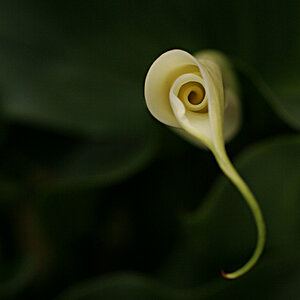

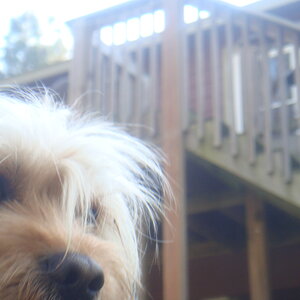
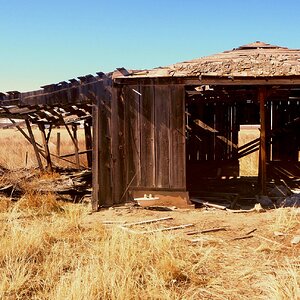
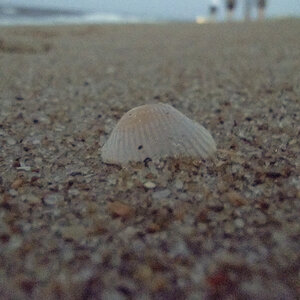

![[No title]](/data/xfmg/thumbnail/32/32706-50b778fbc110c8ea4472547d54c6a923.jpg?1619735610)
